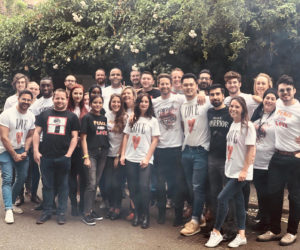Four-stage sourcing process to find the best tech talent
You know the story. It’s a hyper competitive hiring market and the best technical people are hard to find, let alone hire.
So. Where do you look for them?
Finding technical rockstars might feel impossible but it’s certainly not. If it were, we wouldn’t have built a highly successful recruitment business helping high-growth businesses like yours hire them. At scale, too. We generally work in multiples of two, five or ten for any one company, at any one time.
Here’s our four-stage sourcing process, from the moment a client calls us with an opening. (Active recruitment comes later than you might think).
1 – Qualify the opening
First things first – who are we looking for? There’s no point going to market unless you know precisely who you’re going to market for. Equally, there’s no point going to market with an impossible list of requirements.
As we’ve said before, it’s about compromise.
If you want someone yesterday, you can’t also demand niche, senior technical skills and a niche industry background. If you want local Dutch speakers, you might have to wait, or pay above the odds. And so on.
If you’re working with Arrows, we’ll help you refine your brief so you know the person you’re looking for is actually out there. And we’ll tell you if your requirements are impossible – there’s no point wasting your time, or ours.
2 – Approach your active hotlist
We spend all day, every day, immersed in technical recruitment. So our network is our biggest asset – and something our consultants have spent years building.
A typical consultant with three years’ bedding into the market should always have an active hotlist of three to five technical candidates who are actively looking for a new role. So that’s the first step – we see if they could be a fit and ask for referrals if they’re not.
There’s not a like-for-like equivalent to this if you’re recruiting solo, but asking your employee network for referrals is a good idea.
3 – Approach your passive hotlist
In recruitment, a huge bulk of the role isn’t actually about recruiting. It’s about mapping the market – identifying every single player (only possible when you specialise, as we do) and building relationships with them.
As a result of that activity, a typical Arrows consultant also has a passive hotlist of around 150 to 200 technical candidates. As a business, we’ve got a global database of 250,000 technical candidates.
These are people we’ve built a relationship with – often chatting or meeting for coffee every few months. Sometimes we’ve worked with them before; sometimes we’ve even placed them in every new role throughout their career.
So that’s the second step. Calling your passive candidate hotlist and seeing if anyone’s situation has changed, and asking for referrals.
The two hotlist stages are generally so successful that 75% of our hires might come from this source. It’s rare we’d ever ‘go to market’ in an active sense.
But again, this stage is hard to replicate unless recruitment is your day job (building relationships like this takes a phenomenal amount of time). What you could do is call through your ATS and speak to anyone you’ve spoken to before, and ask them for referrals.
4 – Active recruitment (job applications; boards; social media)
The smaller your network, the more you’ll rely on active candidate sources like job applications, job boards and social media.
The issue is, candidates who are actively looking for a role will likely be interviewing in a huge number of places. Possibly ten or more. Which dampens your chances of a successful hire considerably.
Not least because it means you don’t have the level of candidate management you’d like – which comes from having strong relationships.
Also, the best technical people often never make it onto the open market. Top techies generally have strong relationships with recruiters – if they’re looking for a new role, they call the recruiter and ask for one, and that’s that.
Don’t lose hope though. Probably 25% of candidates we send to clients are actively looking for a role, and of those, maybe one in four offers are successful.
Having a great job advert is important here – you never know who’s eye you can catch; someone who never thought they were looking.
That’s why it’s important your advert really sells your opportunity (standing out from the crowd is hard) and doesn’t unintentionally alienate anyone (unconscious bias can be a secret talent deterrent).
To recruit better technical people, network is everything
If you’re only recruiting a couple of technical people a year, you can go to market ad-hoc and you’ll probably be fine. It might take longer than you’d like and you might have a few drop-outs along the way. But you’ll get there.
If, on the other hand, you have ambitious growth plans, you need to view recruitment differently. At that point, recruitment needs to be less about reacting to a need and more about creating a pipeline. So you’ve got the technical talent waiting in the wings when you need to move.
That’s not impossible to do yourself – not at all. But it does take time. And experience. And deep knowledge of the market.
Long-term you can invest in building those capabilities in-house – or you could scale now, by working with strategic growth partners who’ve spent 16 years learning the technical recruitment space inside-out.
Your call. Call us if it’s the latter – we’d love to chat.

